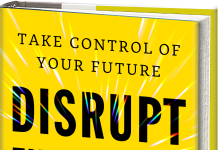My stepdaughter was six when I met my husband. Now she is a freshman in college—bring out the tissues for us empty nesters! Great advice was given to me early in our relationship to be a role model to her, and for years, this approach worked well for us. The fact that we came from different generations didn’t affect us initially as generational tendencies don’t start to show in the formative years, but typically emerge during adolescence.
When she turned 15, in what felt like a blink of an eye, we were old and she was young! Screams of “You have no clue what it is like being a teenager today!” resounded through the house. They were met with my husband’s retort of “The good old days…” That was followed by me (who tries to break into song as often as possible) singing, “Kids, I don’t know what’s wrong with these kids today. Why can’t they be like we were—perfect in every way?”
About this time, I also noticed a difference in my training events. Being a customer service and sales trainer for 10-plus years, I had been exposed to multiple generations but was just getting a real taste of “Millennials.” To be a better facilitator and parent, I began to research this latest generation to join the corporate world so I could communicate effectively with everyone.
Millennial Traits
These Millennials, like my stepdaughter, see parents as their advocates and often are very attached to them. In the classroom, I see Millennials who view their trainers as mentors and crave the one-on-one personal time compared to previous generations who had more traditional conservative relationships with teachers who led the class in group learning.
This Millennials cares about their environment and their community. This was never more obvious to us than when my stepdaughter declined a car from her grandfather because she didn’t need one, is careful about her carbon footprint, and asked him to donate it to our local Safe Haven center. Not all bad, these Millennials. We simply need to recognize that they are perfect in their own way.
How does this knowledge help facilitators communicate more productively with not only Millennials, but all four generations currently represented in the workforce? Humans communicate based on our generational backgrounds; therefore, we need to learn more about each other to eliminate misunderstandings and friction.
If one person on a team speaks German and another speaks Chinese, they would have trouble communicating. It is the same with different generations and can be equally as frustrating. We’ve all experienced uncomfortable moments in class where it is clear a generational divide is causing tension in the room. Maybe a Baby Boomer wants to focus, listen, and take notes and gets frustrated with the Millennial who wants to talk it through or do another social activity.
Just like a well-functioning family, solid learning is based on understanding others and their expectations, attitudes, and habits. How you manage intergenerational groups in a training environment will affect the overall quality of the learning that occurs. To give lasting behavioral change the best chance to succeed, the facilitator needs to understand the unique characteristics of each generation so he or she can use them efficaciously with each individual in the class.
How? First, understand the difference. Research who they are influenced by, what their core values are, what their work ethic is like, how and why they are motivated, how they view authority, how they like to communicate and interact, and how they like their feedback and recognition.
Second, know your audience. Once you know what generations and attributes to expect, you can plan out your course objectives, desired outcomes, and the activities you need to accomplish them. Think through the entire class and alternate between generations when designing the segments.
Tips to Keep in Mind
- Understand participant values. Core values can vary widely across generations. Veterans and Baby Boomers tend to do whatever is needed on the job and keep it separate from home whereas Gen Xers and Millennials strive for a balance and alignment between the office and home. This can lead to older generations perceiving younger ones as less loyal or lazy and, in turn, Gen Xers and Yers can see their elders as workaholics who never change. To combat this, point out the different values in the room. Address the elephant head on! Mix generations in class, and start by having them share with each other what is important to them and what they want out of life and out of the job.
- Accommodate different learning styles. While Gen Xers can learn in different environments, Baby Boomers and Veterans often prefer face-to-face communication and more static training platforms such as PowerPoint and training manuals. And Millennials and the up and coming Gen Zers will only know how to use interactive, technology-based training methods. Use both in class incorporating traditional group activities with visuals such as whiteboards with mobile devices for quizzes, polls, or quick research needed.
- Know the motivators. Younger people want more acknowledgement and feedback whereas older generations are competitive and motivated by the work itself and believe you get there by paying your dues. Find a happy balance, letting the group know you will provide recognition and praise, but also letting them know this training is an investment in them. Show them what was spent for them to be there and what they, in turn, can hope to take away.
- Have them teach. We master what we teach. Ask the Veterans and Baby Boomers in the room to offer their industry knowledge and experience and ask the Gen Xers and Yers to shed light on current technology or culture trends. Task them with figuring out how to apply what the other group presented into their work. Millennials are naturally good at the “hows” in training, and Veterans can rattle off they “whys” immediately. Both are important in order to make your training stick, so use their expertise and have them teach each other. Put the hows with the whys, and you have a recipe for success.
- Create ongoing partnership opportunities. To reinforce what was learned it the classroom, pair up different-aged employees to encourage more cross-generational interaction after class. Put together action plans where the older employee works with the younger employee on how to apply what they learned in class with a fresh perspective offered by the younger employee. These same junior employees should seek the experience and wisdom offered by the senior employees and ask them how they plan to implement what was learned.
- Make mentoring a constant. Bring mentoring into training by assigning each person in class a mentor who already took the course and can help them implement the new techniques and guide them to reach their goals. Making mentoring a part of the employment life cycle that begins in training will ensure that the company’s history and organizational memory transfers from one generation to the next.
Understanding the various generations and how these traits affect their learning will help you as a trainer to develop course material that is effective for all participants. By successfully engaging multiple generations during training, they will not only learn your material, but more about each other, leading to deeper understanding and better work results. Doing this in the training room can show all learners that (strike up the orchestra), we can all be perfect in our own ways!
Kristy Westfall Moyer is a Training account manager at Signature Worldwide, a Dublin, OH-based company offering sales and customer service training, marketing, and mystery shopping services for a variety of service-based industries. For more information, call 800.398.0518 or visit www.signatureworldwide.com. You also can connect with Signature on Twitter @SignatureWorld and on Facebook.



